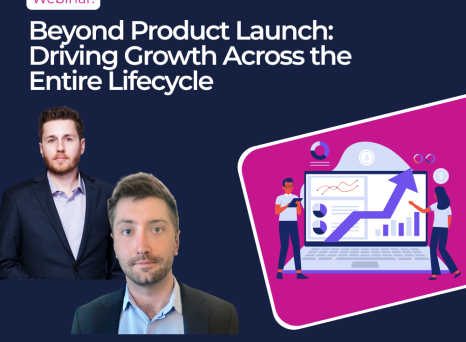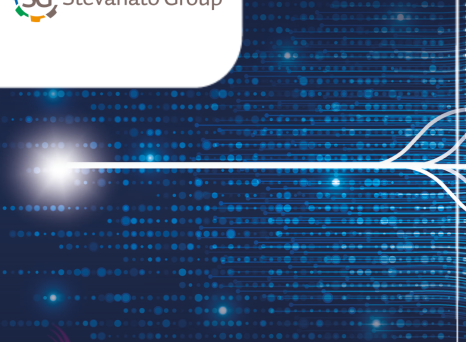Choosing the right project management methodology can be challenging. As a structured, robust framework that’s particularly popular for managing project risk, is the stage-gate process right for your project and organization?
What is the stage-gate process in project management?
Stage-gate, also known as phase-gate, is a project management model that uses a five-step process with four review points to guide a project from conception to completion. Under this methodology, a project is broken down into five management sections, called “stages” or “phases,” with “gates” between them—hence “stage-gate.”
Gates are decision points where stakeholders must review the previous stage’s success and decide whether to continue to the next stage, modify the project, or stop the project altogether. This is commonly known as the “go/kill decision.” The decision to continue, adjust or end the project is a key feature of the stage-gate process.
Each stage (or phase) consists of activities—the work that must be done—and an integrated analysis of them, resulting in the creation of deliverables. A typical breakdown of these stages might look like:
- Ideation or discovery: Brainstorming sessions to generate initial ideas. You’ll define the concept and what you’re trying to achieve or accomplish.
- Business case: Defining stakeholders and project objectives, and compiling research to justify them.
- Development: designing and creating deliverables, such as a product or campaign. Wider teams may get involved, and the project starts to take real shape.
- Testing: Validating of the prototype to ensure the product meets your stated goals and quality levels, and that it’s compliant with regulations and industry standards. The product will be tested out with smaller groups to gather feedback and identify bugs or necessary tweaks.
- Launch: Making and signing off on finishing touches before delivering the end product to its end user or audience
These stages are typically customized depending on the organization, but the principles of stage-gate remain the same. It does share some similarities with waterfall methodology, which also has a linear process with stages following sequentially.
The review gate in the stage-gate process
Between each stage (or phase), there’s a “gate” which connects them—this is an essential step in the stage-gate process, also known as the review. It can be thought of as a boundary or progress checkpoint between each stage. Here, stakeholders and project teams must make decisions about progress.
The subject during each gate depends on the stage that it follows. For example, after the first stage, the gate will discuss the feasibility and quality of the project ideas that have been generated.
While the activities in the gate can be customized for each organization, questions may typically relate to profitability, resources, and goals. What is needed to move the project forward? What criteria will be used to judge success?
Each gate comprises one or more deliverables (resulting from the stage it closes) and criteria (usually both financial and qualitative, organized on a scorecard). Together, these result in an output or decision—typically go, adjust, or kill.
The review gate between each stage ensures consistent project evaluation. This minimizes risk, increases visibility, and helps project teams align strategically.
What are the benefits of stage-gate in project management?
Stage-gate is a simple and adaptable project management methodology. One of its most championed benefits is its prevention of project risk in potentially chaotic new product development projects, which can often involve large, cross-functional remote teams. Other benefits include:
- Risk mitigation — By establishing times for review throughout the project at each gate, stage-gate promotes information-led decision making. Teams can review where more rewarding opportunities may lie, avoiding budget blowouts.
- Project success — By taking a step back at each stage and regularly seeing the bigger picture, stage-gate can bring discipline to your project execution, minimizing errors and ensuring no steps get missed. Timelines, deliverables, criteria, and outcomes are kept in clear view, with products at their best before launch.
- Resource management — With its in-built review gates, the project team can be shuffled around if required. This minimizes wasted resources, streamlining projects.
- Increased transparency — Exhaustive documentation, regular reviews, and clarity on project timelines and progress ensure that responsibility is clear and all team members are on the same page, boosting confidence and cohesion.
- Collaboration — By emphasizing a structural approach, stage-gate can facilitate more effective communication between large teams across multiple departments or locations.
Which businesses and projects are suited to the stage-gate process?
Any growing businesses in need of a reliable, robust, and fuss-free process can benefit from using stage-gate. As a highly structured approach, it is particularly popular with larger enterprise organizations, who often have multidisciplinary teams, disparate departments, and numerous stakeholders.
Stage-gate can help to structure and speed up new product development projects, software launches, and organization-wide changes, benefitting those with cross-functional projects and high-growth objectives. Stage-gate is a popular methodology for products that need to be at their best before launch, and it is particularly apt wherever there are many moving parts.
However, the natural innovation process is not a linear one. Thus, stage-gate can often be too structured for fast-paced and evolving projects. That’s where agile methodologies can come in. They allow for change at any stage in the project — the team starts with a simple project outline and develops functionalities in later versions (called iterations).
Stage-gate process vs agile methodology: what’s the difference?
With stage-gate, the entire project is covered. Teams complete each step before moving forward, using a five-step process. Work to be completed and evaluated is defined at each stage—a gate that must be passed before moving on. There is significant upfront planning, with validation at specific stages.
Agile also splits a project into stages, called sprints. Agile prioritizes the delivery of a shippable prototype product after every iteration, which can be tested with a customer as soon as possible. It aims to involve the user throughout, delivering products incrementally by measuring feedback and satisfaction as the project progresses.
So, with stage-gate, the product is typically well-defined at the outset, but with Agile, the product can evolve and adapt throughout the project. stage-gate emphasizes a large multidisciplinary team, exhaustive documentation and a business case; Agile is typically characterized by a smaller technical team, individual interactions, and openness to change.
Though at first glance these two methodologies can seem diametrically opposed, a hybrid approach does also exist.
Agile stage-gate: the best of both worlds?
Agile and stage-gate methodologies can actually be used harmoniously—introducing Agile stage-gate. This approach—an evolution of stage-gate—pairs stage-gate’s classic structured approach with the agility of Agile’s self-organized teams and focus on delivery. Agile stage-gate includes shorter cycle iterations, inviting testing and customer feedback during each stage/phase.
“SAFe” milestones in stage-gate project management
Scaled Agile Framework (“SAFe”) is a popular and comprehensive project management approach. It is a set of structured workflow patterns that helps large organizations adopt and then scale agile project management methodologies.
As a framework, it includes several milestones to aid and speed up product development, promoting collaboration, alignment and delivery across many teams. A milestone is a specific, significant stage of a project, used to track progress towards a goal. In SAFe, the main 3 types of milestones are:
- Program Increment (PI) milestones: At the start of each project or program segment (called an increment), teams must come together to set goals, plan upcoming work, and prioritize activities. Project teams must repeat this process approximately every 8–12 weeks to prepare for the next iteration.
- Fixed-date milestones: These are non-negotiable dates and times that will impact your project. These are pivotal events or periods in your project development timeline, influenced by external factors or third parties.
- Learning milestones: When the opportunity to learn presents itself, project teams must take it. Agile methodologies focus on continuous development. So, feedback and insight from customers, users, and stakeholders is vital.
Whilst more associated with agile methodologies than stage-gate methodologies, SAFe milestones can benefit both approaches. This is because businesses can deploy Agile and stage-gate in harmony, as touched on earlier.
At Planisware, our solutions can help you incorporate the best of stage-gate and agile methodologies to transform how you plan your projects, coordinate your teams, develop products, and deliver your organization’s mission.


